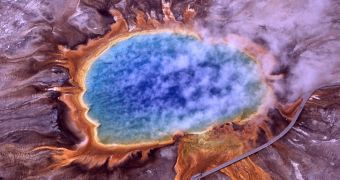A group of investigators has recently demonstrated in a new scientific study that it is entirely possible extremophiles originating from Earth may endure on the Jovian moon Europa. Past studies have shown that meteorite impacts can take these microorganisms to other worlds relatively unharmed.
Researchers also determined in a recent investigation that ejecta material from Earth had a higher chance of reaching Jupiter and its moons than Mars. While this may seem counter-intuitive at first, the experts assure that their calculations are correct, Technology Review reports.
Another important aspect in this equation is taking into account the times when Earth was impacted by meteorites. Some of the youngest craters on our planet are only millions of years old, and we know that several of the larger impact that occurred were so powerful they triggered global extinction events.
When taking all these factors into account, a clear image forms – asteroid impacts may have easily raised ejecta plumes containing microorganisms into orbit, putting them on a path that took them further out into the solar system, to where Jupiter orbits the Sun.
Among these microorganisms, extremophiles had the best chances of survival. Their name comes from the fact that they are known to live in the most extreme conditions here on Earth. These locations include volcano calderas, hydrothermal vents, underground Antarctic lakes and other inhospitable places.
Once they arrived at Europa, these organisms may have found an excellent environment to receive them. While remaining inhospitable to more complex lifeforms such as ourselves, the moon may have easily provided the spartan extremophiles with the few resources they needed in order to survive.
In a new study, Argentinian researchers from the Universidad de Buenos Aires, led by expert Ximena Abrevaya, looked at several species of viruses, bacteria, fungi and DNA biomolecules, in order to assess their potential for survival on the Jovian moon.
In the experiments, the team created a vacuum chamber in which they emulated the conditions known to exist on the surface of Europa. The salt-loving archae Natrialba magadii and Haloferax volcanii and the radiation-resistant Deinococcus radiodurans bacteria were placed inside the test chamber.
During the tests, the microorganisms were battered with extreme levels of ultraviolet radiations, just as they would be on Europa. Small populations of Natrialba magadii and Deinococcus radiodurans endured, whereas Haloferax volcanii did in mass.
The new data on extremophiles' resistance again bring into focus the need for advanced sterilization procedures on outbound spacecraft, such as ones heading for Mars. If organisms make their way to those environments, we may lose our ability to detect if life developed there on its own.
Details of the new investigation were published online in the preprint, online scientific journal arXiv.

 14 DAY TRIAL //
14 DAY TRIAL //